Irises are popular garden flowers with a distinctive shape. Their name means “rainbow” and also refers to the Greek goddess of messaging. There are over 300 different species of irises. Here are ten of the most popular types of iris, and some of their distinguishing features.
1. Bearded Iris (Iris germanica)
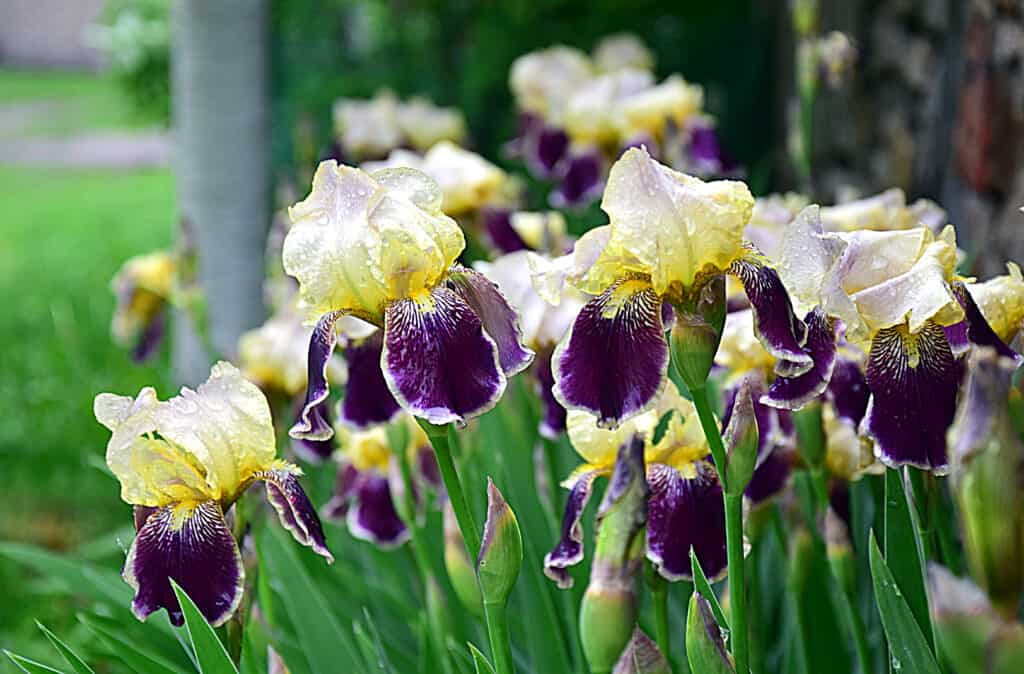
Bearded irises have “beards” on their petals that resemble fuzzy caterpillars.
©Krzysztof Bubel/Shutterstock.com
Also called the German iris, this is one of the most popular types of irises to grow in gardens. The bearded iris comes in over 60,000 different cultivars. Most bearded irises grown in gardens are one of these cultivars rather than the wild type. Like most irises, they have three drooping petals, called “falls,” and three upright petals, called “standards.” Each of the falls has a strip of fuzzy material called a “beard” running down its center. This is where the species gets its name. Bearded irises can be 20-40 inches tall and come in a wide variety of colors. They are native to southern Europe and the Mediterranean.
2. Dutch Iris (Iris hollandica)
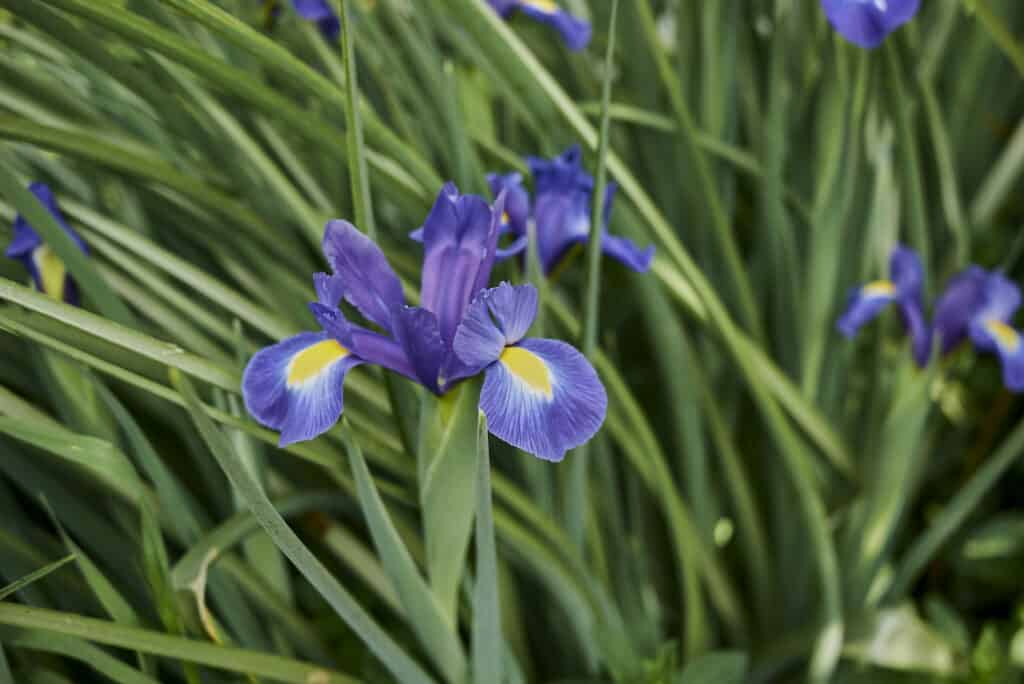
The Dutch iris often has purple-blue flowers.
©iStock.com/seven75
The Dutch Iris is a species popular with florists. Like the bearded iris, the Dutch iris’s flowers have three falls and three standards. However, they lack the beards that characterize the bearded iris. Dutch irises also tend to be a bit smaller than bearded irises, growing 18-24 inches tall. They come in a variety of colors but are usually blue, yellow, or white. As their name suggests, Dutch irises originate from Holland, but they are a hybrid derived from species native to Spain and Morocco.
3. Dwarf Crested Iris (Iris cristata)

Crested Iris flowers are considered “endangered” in Pennsylvania and Maryland.
©iStock.com/Gerald G Gantar
The dwarf crested iris is named for the crested ridges on its falls. It is also named for its small size, growing only 6-9 inches tall. Dwarf crested irises can be violet to light blue or occasionally white. The namesake crests are golden. Dwarf crested irises are native to the eastern United States, where you can find them growing in forests as ground cover. Unlike some other types of irises, they do not need to grow near water.
4. Dwarf Iris (Iris reticulata)
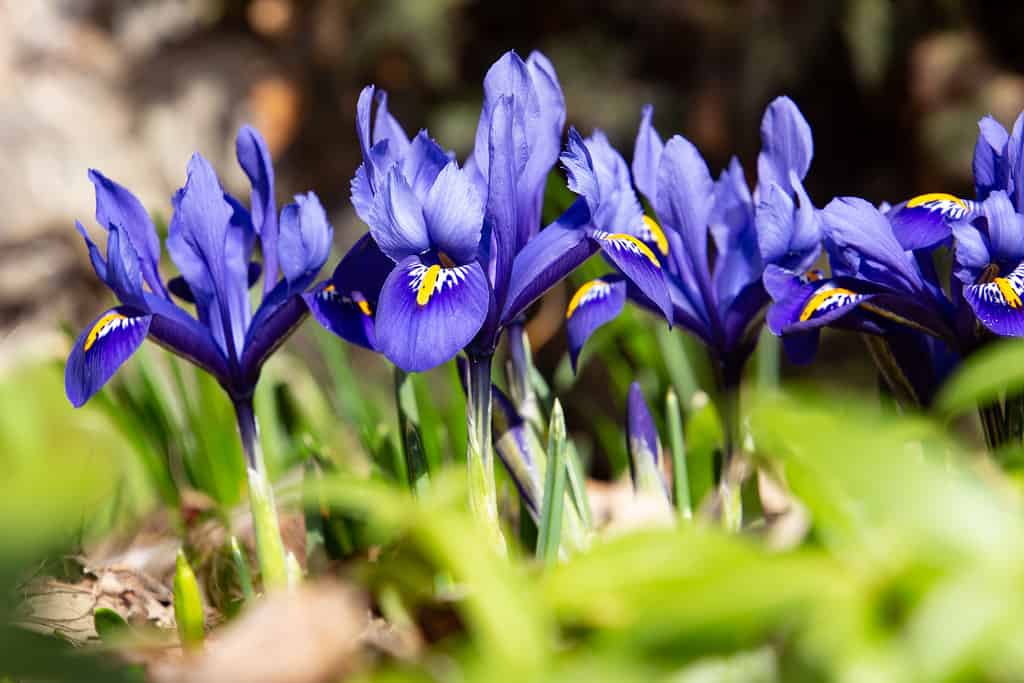
The dwarf iris can also be called the blue netted iris or Zwerg iris.
©Robert Knapp/iStock via Getty Images
The dwarf iris is also called the netted iris. As its name implies, it is one of the lowest-growing types of iris, growing only 4-8 inches tall. The flowers are usually deep blue or purple, and like other irises, they have three falls and three standards. The dwarf iris is native to Russia, the Caucasus, and northern Iran. It is one of the earliest blooming irises, as it blooms in late winter to early spring.
5. Harlequin Blue Flag Iris (Iris versicolor)

The Harlequin blue flag reaches only around 31 inches in height.
©Edgar Lee Espe/Shutterstock.com
This native North American species is also called the northern blue flag iris. The Harlequin blue flag iris has the typical iris shape, with three falls and three standards. It grows 24 to 36 inches tall. The flowers are usually blue, purple, or violet but can also be yellow or rarely white. The Harlequin blue flag iris is native to the northeastern United States, where it is most commonly found in wetland habitats.
6. Japanese Iris (Iris ensata)
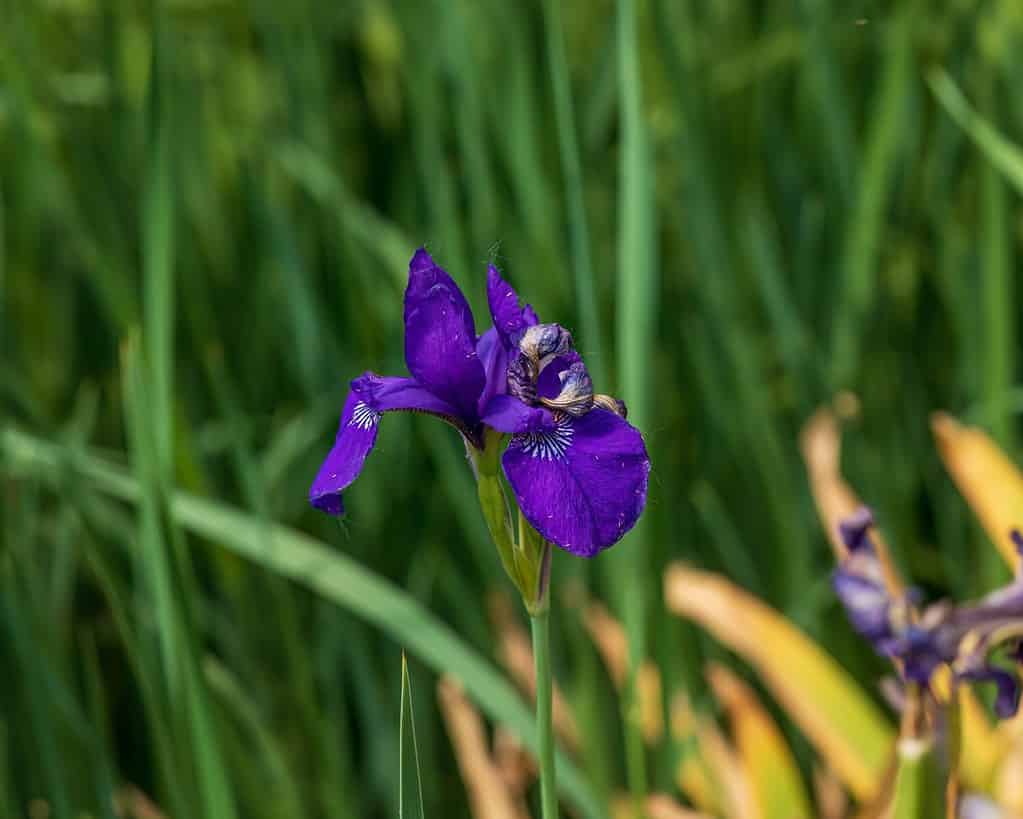
Japanese irises require a lot of moisture, so they grow best near water.
©Mark R Coons/Shutterstock.com
The Japanese iris is a water-loving species commonly grown along the edges of ponds and streams. The flowers have a flattened shape and lack the beards found on the bearded iris. This plant can grow from 24 to 48 inches tall. Japanese irises come in a variety of colors, including blue, purple, pink, and white. They are native to East Asia and Kazakhstan.
7. Louisiana Iris (multiple species)
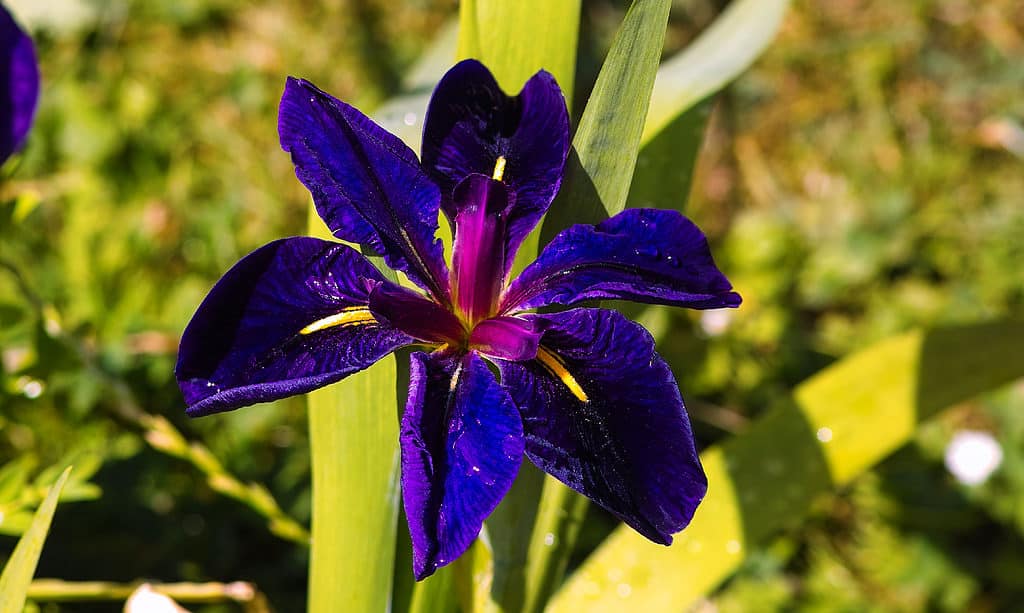
The category of “Louisiana irises” includes cultivars of five different species and their hybrids.
©Ole Schoener/Shutterstock.com
What is commonly called the Louisiana iris is actually five different species—the zigzag iris, copper iris, giant blue iris, Dixie iris, and Abbeville red iris—as well as hybrids of those species. Like the Japanese iris, all species of the Louisiana iris grow best near water. The flowers have the standard iris shape, with three standards and three falls, and lack beards. As a group of multiple species, Louisiana irises come in a variety of sizes, growing anywhere from 12 to 60 inches tall, as well as a variety of colors. All varieties are native to the lower Midwest and southern United States.
8. Siberian Iris (Iris siberica)
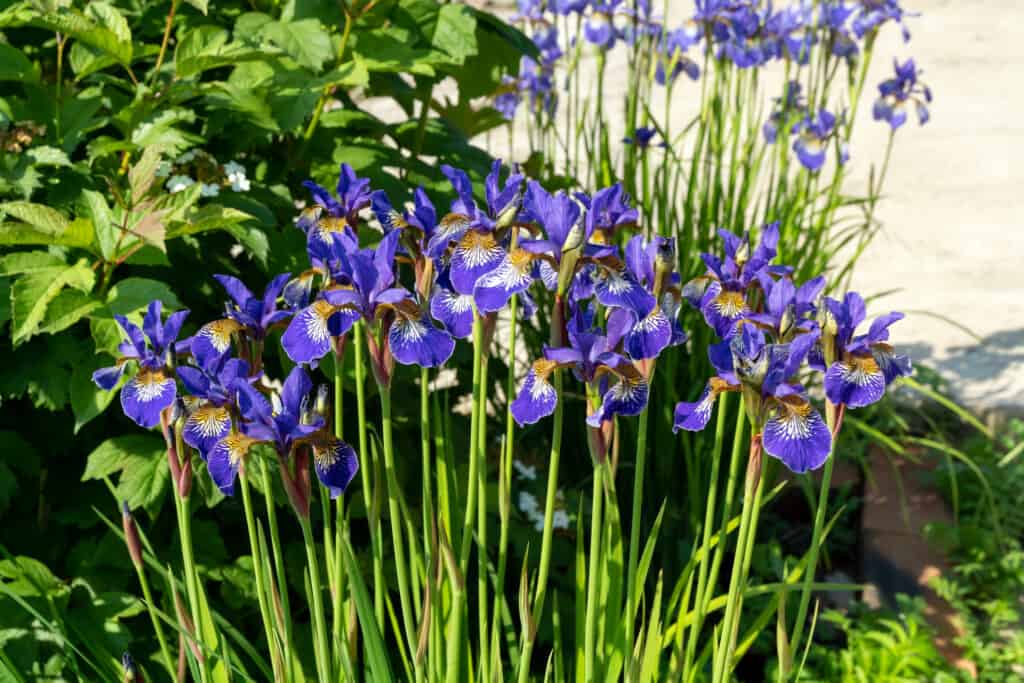
Siberian
irises bloom in early to mid-summer.
©iStock.com/Svetlana Popova
The Siberian iris is another popular garden species. Like the Japanese iris and the Louisiana iris, the Siberian iris’s flowers have the typical iris shape and lack beards. The plants grow from 30 to 48 inches tall. Siberian irises are available in a wide variety of colors, including bicolors, but most of them are blue, violet, or purple. This type of iris is a hybrid of species that are native to northern Asia.
9. Spuria Iris (Iris spuria)

Spuria irises bloom from May to July.
©apugach/iStock via Getty Images
The spuria iris is also called the blue iris or the butterfly iris. Its flowers have three narrow standards and three falls. The plants grow from 24 to 60 inches tall. Spuria irises come in a variety of colors including blue, purple, white, wine, and brown. They are native to Africa, Asia, and Europe.
10. Yellow Flag Iris (Iris pseudacoris)
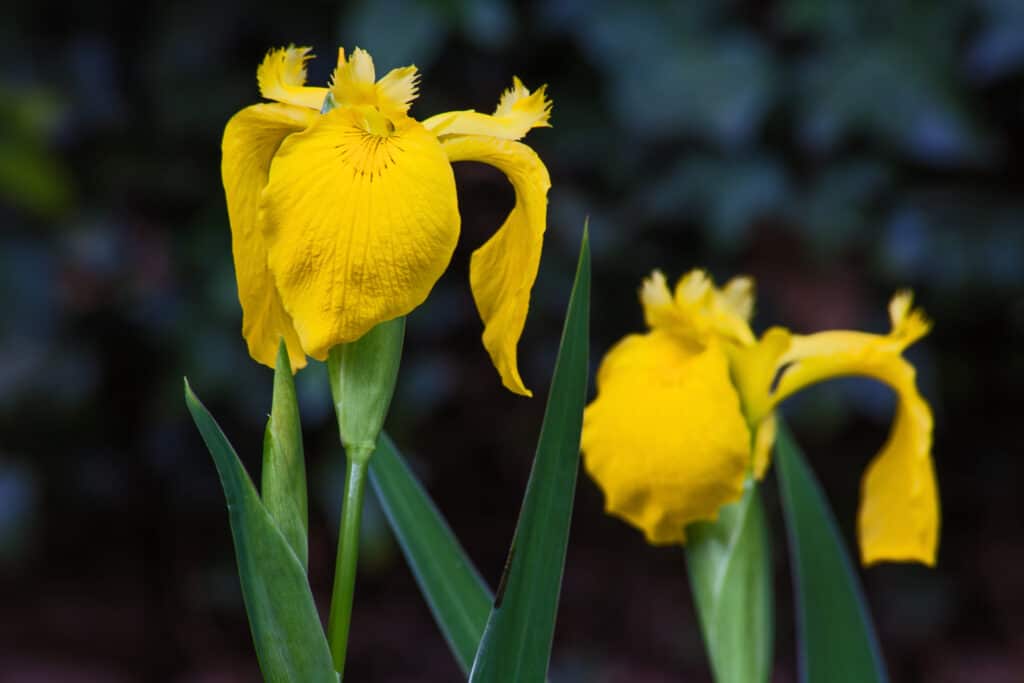
The Yellow Flag Iris is an easy-growing plant that grows in shallow water and boggy areas. Unfortunately, it is a very invasive plant.
©iStock.com/kobuspeche
The yellow flag iris is a popular garden species, but it should be grown with caution, as it spreads aggressively and is considered an invasive species in some parts of the United States. It has the typical iris shape and stands at 36 to 60 inches tall. As its name implies, the flowers are usually yellow. Yellow flag irises are native to Europe, the Caucasus, and northern Africa.
The photo featured at the top of this post is © iStock.com/liuyushan
Thank you for reading! Have some feedback for us? Contact the AZ Animals editorial team.







